Want to design a stunning garden? This step-by-step guide covers everything from setting your vision and assessing conditions to choosing plants and construction.
Okay. So, the very first thing that needs to happen when creating a garden design is to set the overall vision, the style, the goals, and the must-haves.
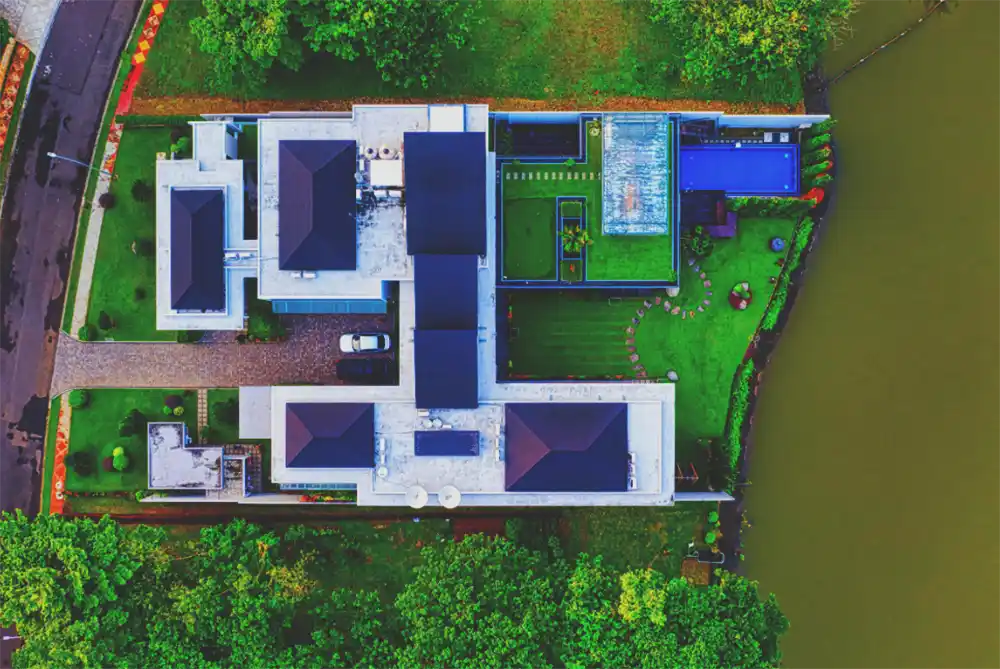
Setting Your Garden Vision and Goals
This is the exact same process that is gone through when designing an interior space. It is important to go through that entire process when designing outdoor spaces as well. For instance, a number one goal might be to be able to cut flowers and bring them into the house. That should be set from the very beginning.
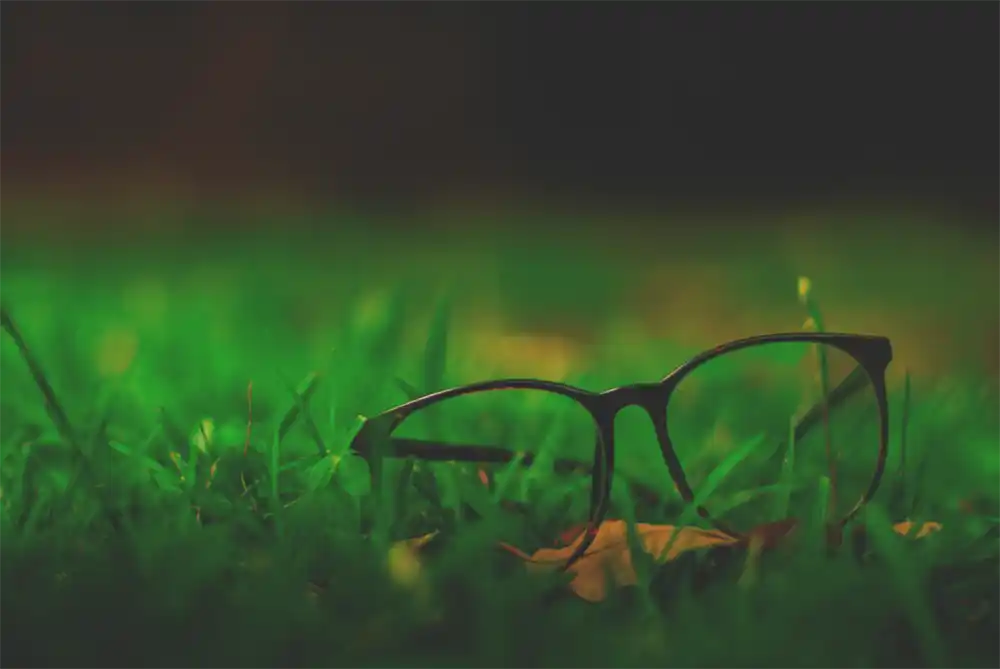
The style that is wanted for the garden might mimic the abundant overgrown quality of English country gardens. Keeping those things top of mind as you lay out the plan for all of the flower beds and what you want to include and all the plant materials is essential because it helps guide all the decisions that are made and how everything is laid out. So that’s the first and foremost most important thing to do.
Must-Haves
Must haves is another part of setting that overall vision and goals. For example, one might want to have as many cut flower plants as possible, but also want to have some really great foundational planting that is evergreen. There might be a lot of boxwoods in the garden. That provides structure throughout the entire year. So, it’s important to have that balance between the overgrown wispiness of the cut flowers and the evergreen structure of the boxwoods and some of the larger plants and trees that are in the garden.
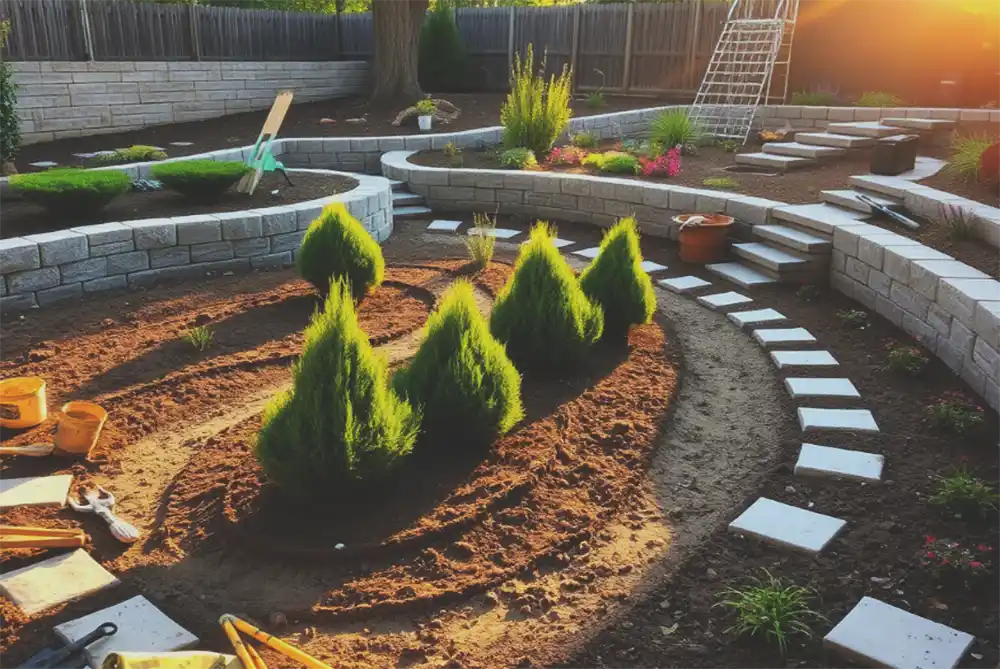
Your vision might look different. You might want something that’s a little bit more manicured. You might not want to deal with cut flowers. It might be all succulents or whatever. But it’s crucial to really think about what is wanted out of the garden. One might want a place to be able to relax, a place that feels inspirational, a place to connect with nature and spend some quiet time.
A lot of times people come out into the garden in the morning, have a cup of coffee and just have a moment to chill out before the workday starts. That might be something that is wanted in the garden or it might not be. But really get clear on how you want the garden to work for you because if you do, everything else that is done throughout the design process is going to be easier and it’s going to give you a better outcome.
Assessing Existing Conditions
Now that the vision is set, along with the goals and must-haves, the next thing that needs to happen is to take an assessment of the existing conditions. So, this is done in a house as well. The interior architecture is considered, as well as the things that can’t be changed. And when thinking about garden design, the things that can’t be changed are the soil.
It can be amended, but you need to know what type of soil there is. If there is clay soil, know that in order to get an abundance of cut flowers, raised beds might be needed so the soil can be amended in the raised beds. And then all the soil can be amended in the perimeter beds so that the plants can be grown in the best conditions possible.
That’s something to think about. Consider the weather conditions because not all gorgeous cut flowers grow in all the different places in the United States or in the world even. Think about that. Think about what type of irrigation options you have. In some locations, irrigation is an absolute must. And in order to get an abundance of flowers the way that is wanted, drip irrigation might be needed because normal sprinkler irrigation would beat the flowers to death. So all of those existing conditions play into the way that the garden is designed and some of the elements that are brought into the space in order to have the type of garden that is wanted and to meet gardening goals.
Layout and Hard Surface Materials
You’ve got your design plan, you’ve got your pre-existing conditions, you’ve thought about the environment that you’re creating for your plants, and you’ve started thinking through the plants that would work best in your garden because we want to make sure that everything thrives and you don’t get frustrated. The next phase of the garden design process is thinking through the layout and the hard surface materials that you want to include in your garden.
One might want to repeat some of the elements that are on the house and in the existing landscape. So, that might be painted brick, cedar elements.
Thinking through the hard surface material is important. The goal might be to repeat the brick and painted brick. Repeating the cedar and making sure that natural stone is included in the garden somehow is important. So, all of the perimeter beds might be edged in a really beautiful natural blue stone. Now, another thing that can be considered is using the stain color on cedar raised beds.
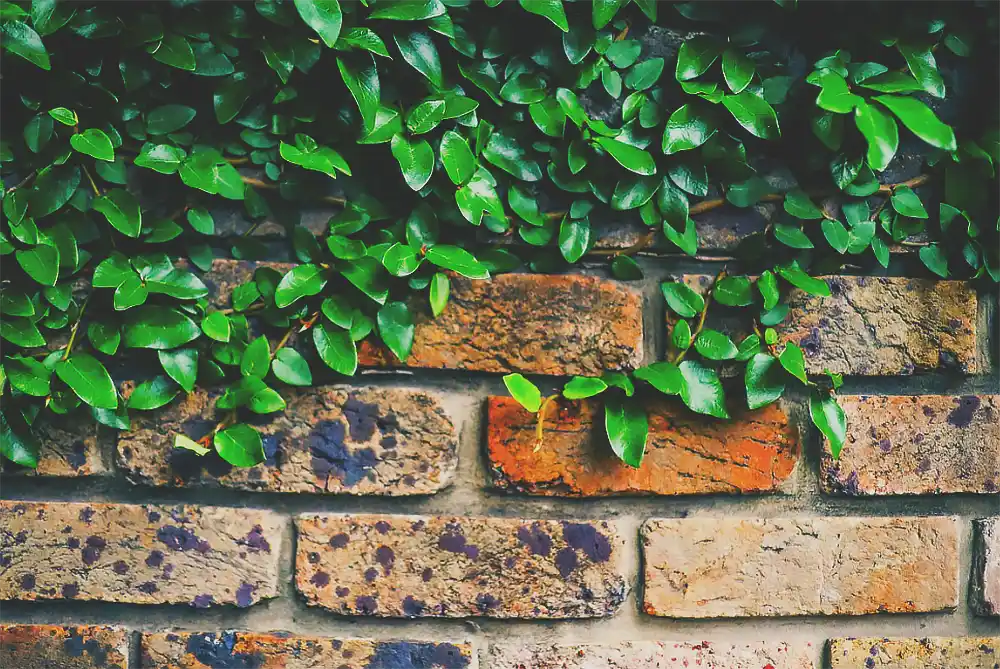
Another thing that might be wanted is to include pearavevel. So, all of the pathways and everything are pearavevel in the garden. And that is beneficial because it’s permeable and all the rain water is able to soak into the ground and run off and not be a hard surface concrete material or paved material that’s not that great for the environment. It’s great if you get an opportunity to include some pig gravel into your garland garden. One last little thing on the pig gravel is that all of the little runners and ground cover kind of spill out into the pearl.
So that phase is done. It has been decided what materials are wanted to use. The layout of the garden has been thought through. That is really, really important. And the amount of space that you’re working with has been considered. When everything is mapped out, when everything is drawn out, it can be done in a trusty garden journal on graph paper. This does not have to be complicated. You can use an online like design software if you want, but easy and simple wins every single day.
The last little detail to consider when planning your layout is to think through the exterior lighting elements that you want to include. There might be some landscape lighting in the garden that some up lighting. Uplighting gives so much drama at night, but there also might be string lights because they were a must have. That requires pre-planning.
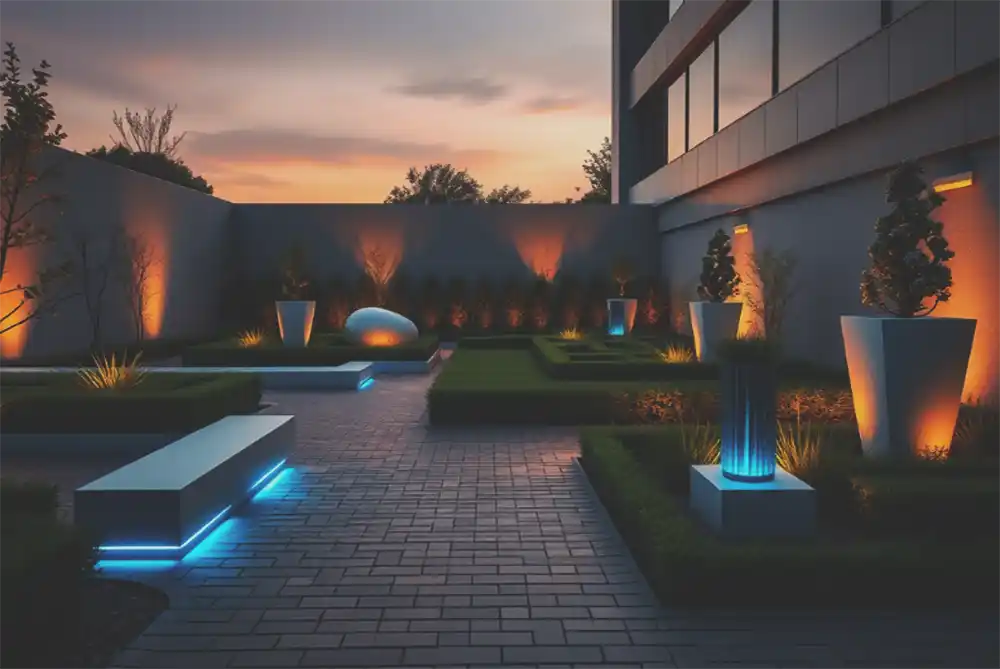
As far as the raised beds and the perimeter beds go, make sure to maximize the entire space. So, there are large walkways down the center that connect this side of the garden to the other side of the garden through the patio. And then in between the raised beds and the perimeter beds, make sure that there is roughly about 3 ft. 3 ft is a really great clearance space for interiors. So, that feels like there’s enough room to move around and to bring your little garden trolley down all of the different pathways as you’re weeding and stuff like that. So that was step number three. Thinking through all the materials that we want to use. Thinking through the layout that we want to have. Thinking through if we want to include some type of lighting element in our gardens.
Construction and Planting
Now the next phase is the actual construction phase of your project. And you may be doing it DIY style. Or you may be hiring somebody. It can be a combination. You definitely want to have a professional do your retaining walls, but it can be a combination effort.
Now, once your construction phase is over, regardless if you’re doing it yourself or you’re hiring somebody, you’ve got the groundwork of your garden laid with your infrastructure of your stonework, your hardscapes, your lighting if you’re doing that, any type of irrigation needs that you have. Then it’s time to start planting. So, there might be a combination of both shrubs that are evergreen. And there might be a lot of perennials. It can be more rewarding to plant perennials. If money is going to be spent on plants, it’s nice for them to give back year after year. So, there might be mostly perennials in the garden.
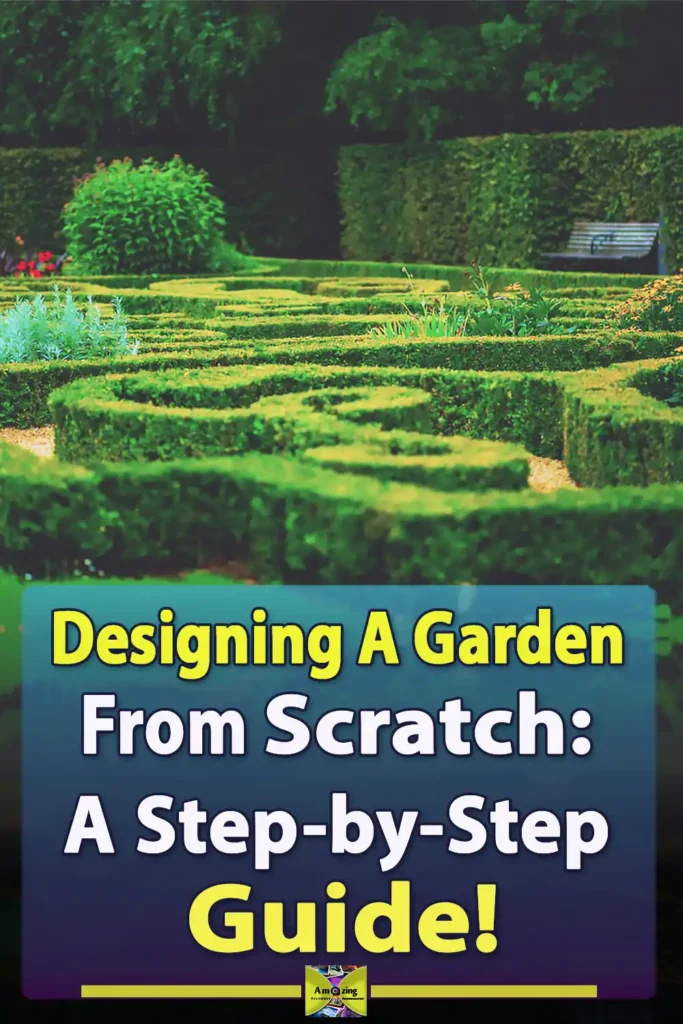
There might be some absolute must-haves when it comes to plant material. For instance, wisteria might be desired. English roses might be desired. So, there are David Austin roses in the garden. Dahlias might be desired. Some other things that might be wanted include pianies and viburnum trees. Vegetables might be wanted in the garden, but those spots might be better used for flowers. As you’re designing your garden, as you’re thinking through your garden, think about the plant materials that you want to use. And do your research. It’s kind of one of the most fun things about designing a garden is just to dig into what plants work well in your environment. What native plants can you bring in to support pollinators?
Make sure that there are plants that are native and that pollinators will love. So, make sure to create a garden that not only looks beautiful and has great flowers that can be cut and brought inside, but also that support honeybees.
Container Plants
The last thing that I will say that I really am glad that I did when I was thinking through the garden design is I made sure to have a spot in the garden for container plants. And one of the things that is great, and it’s a really great way to add a lot of visual interest into your garden is with container islands. The plants kind of intermingle with each other and it just looks like one big plant installation. Even if you don’t have a large space, you can always add some containers to even a patio and create a little gardening moment in a space that may be smaller.
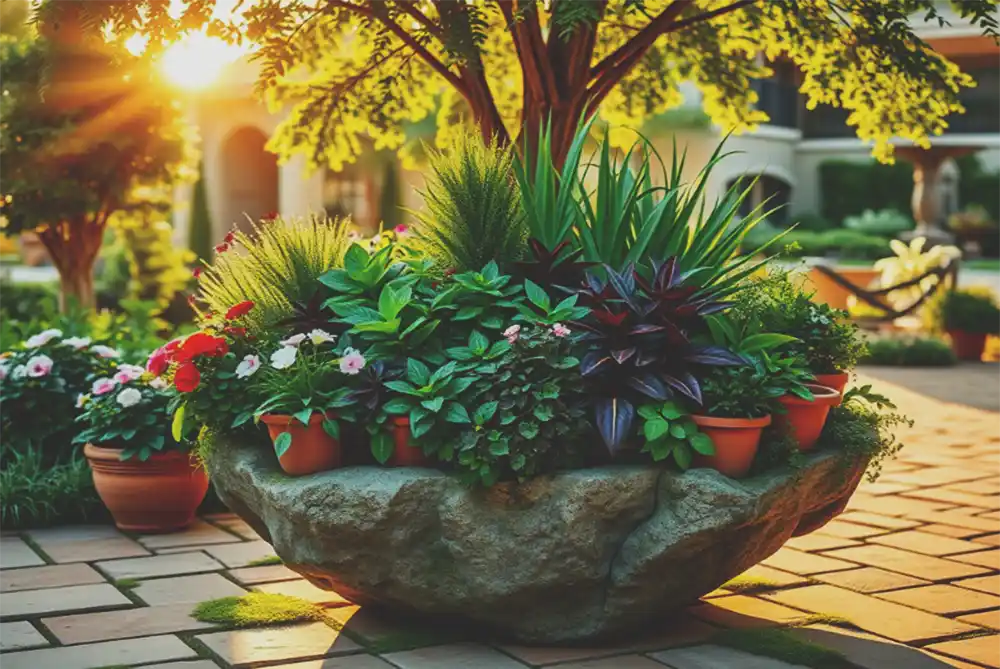
Conclusion
Designing your own garden involves setting a clear vision, assessing your existing conditions, planning your layout and materials, handling construction, and then planting a mix of shrubs and perennials, plus considering container plants for added visual appeal. A thoughtfully designed garden becomes a happy place, connecting you with nature and providing a space to express yourself.
